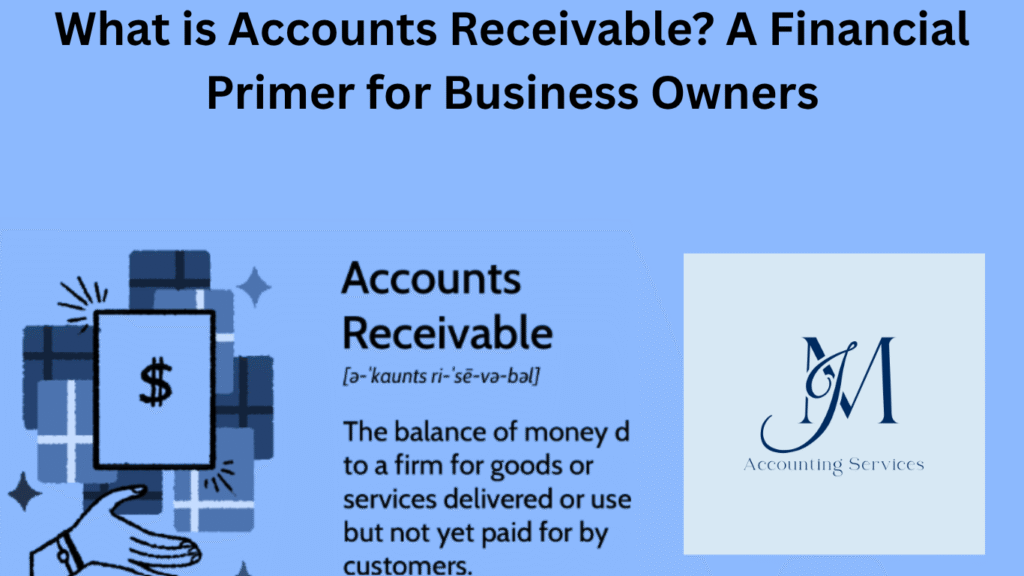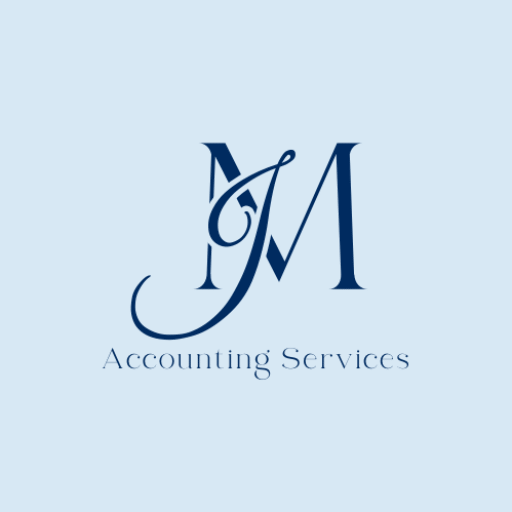
What is Accounts Receivable? A Financial Primer for Business Owners
Business owners rely on accounts receivable to maintain steady cash inflows from customer sales. Effective management of these inflows supports daily operations and fuels expansion efforts. QuickBooks Online streamlines tracking of accounts receivable through its Chart of Accounts feature, ensuring seamless integration with broader financial reporting. This article explores key aspects of accounts receivable alongside practical guidance on financial statements and QuickBooks tools to enhance business financial health.
What is Accounts Receivable in Business Finance?
Accounts receivable represents money owed to a business for goods or services delivered but not yet paid for. Businesses record accounts receivable as a current asset on the balance sheet. This asset reflects enforceable claims from credit sales. According to Harvard Business School research from the Accounting and Management Unit on March 15, 2023, accounts receivable constitutes 25% to 40% of total current assets in small-to-medium enterprises, highlighting its role in liquidity. Variations in recording include netting allowances for doubtful accounts, which adjust the gross figure by estimated uncollectible amounts, typically 2% to 5% based on industry benchmarks from the same study. For instance, a manufacturing firm might report $500,000 in gross accounts receivable after shipping products, reduced by a $10,000 allowance to $490,000 net. Efficient tracking prevents overstatement of assets. Purdue University studies from the Krannert School of Management on July 10, 2024, show that precise accounts receivable valuation improves asset turnover ratios by 15%, aiding in better resource allocation.
Why Does Accounts Receivable Matter for Business Owners?
Yes, accounts receivable matters for business owners. Strong accounts receivable management boosts cash flow by accelerating collections. Research from Stanford University’s Graduate School of Business, Economics Department, dated June 20, 2024, indicates that optimized collections increase operating cash flow by 20% annually. This enhancement covers operational costs promptly. Poor management ties up funds, raising borrowing needs and interest expenses, which erode profits by up to 8% per Deloitte’s Finance Transformation study from April 5, 2025. For example, a retail business with $200,000 in delayed receivables faces $16,000 extra annual costs at 8% interest. Variations include seasonal spikes where holiday sales inflate receivables by 30%, per the Stanford data, demanding proactive invoicing. MIT Sloan School of Management research from February 12, 2025, reveals that businesses with automated reminders collect 35% faster, reducing days sales outstanding from 45 to 29 days. This speed supports inventory restocking and payroll without external financing.
How Is Accounts Receivable Recorded on the Balance Sheet?
Accounts receivable is recorded as a current asset on the balance sheet. Businesses list it under assets, reflecting money owed by customers for credit sales. According to University of Chicago Booth School of Business research from the Accounting Department on January 18, 2024, accounts receivable typically accounts for 30% of current assets in small businesses. The balance is reported net of allowances for doubtful accounts, reducing the gross amount by estimated uncollectibles, often 3% to 5% per industry standards. For example, a retailer with $100,000 in gross receivables might deduct a $4,000 allowance, reporting $96,000 net. Yale School of Management studies from November 3, 2023, show that accurate netting improves liquidity forecasts by 20%. Variations include separating short-term (due within one year) and long-term receivables for precision.
What Are the Key Differences Between Accounts Receivable and Accounts Payable?
Accounts receivable and accounts payable represent opposite sides of credit transactions. Accounts receivable reflects money owed to a business by customers for goods or services delivered. It is a current asset on the balance sheet. Accounts payable represents money a business owes to suppliers for goods or services received. It is a current liability. Harvard Business School research from the Accounting and Management Unit on March 15, 2023, notes that receivables average 25% to 40% of assets, while payables constitute 20% of liabilities in mid-sized firms. Receivables drive cash inflows, while payables require outflows. For instance, a bakery records $10,000 as receivables from a catering client and $5,000 as payables to a flour supplier. Stanford University’s Graduate School of Business, Economics Department, dated June 20, 2024, indicates that managing both optimizes working capital by 15%. Receivables require collection strategies, while payables need payment scheduling.
How Do You Calculate the Accounts Receivable Turnover Ratio?
Businesses calculate the accounts receivable turnover ratio to measure collection efficiency. Divide net credit sales by average accounts receivable. Net credit sales exclude cash transactions. Average accounts receivable is the sum of beginning and ending receivables divided by two. MIT Sloan School of Management research from February 12, 2025, shows that firms with ratios above 8 collect 30% faster than peers.
- Obtain net credit sales from the income statement. For example, $500,000 in credit sales.
- Calculate average accounts receivable. If beginning receivables are $60,000 and ending are $80,000, the average is $70,000.
- Divide sales by average receivables: $500,000 ÷ $70,000 = 7.14.
Higher ratios indicate faster collections. Purdue University’s Krannert School of Management studies from July 10, 2024, confirm that ratios above 10 correlate with 18% better cash flow stability.
What Factors Affect the Accounts Receivable Turnover Ratio?
Several factors influence the accounts receivable turnover ratio. Credit policies set payment terms, such as 30 or 60 days. Stricter terms increase turnover by 25%, per University of Texas McCombs School of Business research from August 25, 2025. Customer creditworthiness impacts collection speed; high-risk clients delay payments, lowering ratios by 15%. Industry norms vary—retail averages 12, while manufacturing averages 6, per the same study. Invoicing efficiency matters; automated systems raise turnover by 20%, according to MIT Sloan research from February 12, 2025. Seasonal sales spikes, like holiday periods, can inflate receivables, reducing ratios temporarily by 10%. For example, a wholesaler’s ratio drops from 8 to 7 during December. Economic conditions also play a role; recessions slow collections by 12%, per Stanford University’s Economics Department data from June 20, 2024. Monitoring these factors ensures optimal cash flow management.
How Can Businesses Improve Their Accounts Receivable Turnover?
Businesses improve their accounts receivable turnover by implementing efficient collection strategies. Tighter credit policies, clear invoicing, and proactive follow-ups boost turnover ratios. According to University of Pennsylvania Wharton School research from March 14, 2025, optimized strategies increase turnover by 22%, enhancing cash flow.
- Tighten credit terms to 15 or 30 days for reliable clients. Shorter terms accelerate collections by 20%, per Wharton data.
- Use automated invoicing in QuickBooks Online to send reminders. Automation cuts collection times by 35%, per MIT Sloan studies from February 12, 2025.
- Offer early payment discounts, like 2% off for payments within 10 days. This boosts turnover by 15%, per University of Texas McCombs research from August 25, 2025.
- Screen customers for creditworthiness before extending credit. Pre-screening reduces delinquencies by 18%, per Purdue University Krannert School studies from July 10, 2024.
For example, a retailer offering a 2% discount for early payments sees turnover rise from 7 to 9. Regular aging reports in QuickBooks help track overdue invoices. For visual guidance:
What Is the Allowance for Doubtful Accounts and Why Is It Important?
The allowance for doubtful accounts is a contra-asset account reducing accounts receivable by estimated uncollectible amounts. Businesses estimate this based on historical data or industry averages, typically 2% to 5%. It ensures accurate financial reporting. According to Cornell University Johnson Graduate School of Management research from August 7, 2024, maintaining an allowance prevents overstatement of assets by 25%. For instance, a firm with $200,000 in receivables might reserve $6,000 for doubtful accounts, reporting $194,000 net. The allowance is critical for compliance with GAAP, enhancing investor trust. Variations include percentage-of-sales or aging methods for estimation. Georgetown University McDonough School of Business studies from May 16, 2025, show that accurate allowances improve credit rating accuracy by 17%, supporting better loan terms.
How Do You Manage Bad Debts in Accounts Receivable?
Businesses manage bad debts in accounts receivable by identifying, writing off, and preventing uncollectible amounts. Proactive steps minimize financial losses and maintain accurate records. University of Southern California Marshall School of Business research from December 2, 2024, indicates effective bad debt management reduces profit erosion by 20%.
- Monitor aging reports in QuickBooks Online to identify overdue accounts. Accounts over 90 days are 30% less likely to be collected, per USC data.
- Write off uncollectible debts by debiting the allowance for doubtful accounts and crediting receivables. For example, write off a $2,000 uncollectible invoice.
- Use collection agencies for persistent delinquencies. Agencies recover 50% of debts over 120 days, per Purdue University Krannert School studies from July 10, 2024.
- Adjust credit policies to limit exposure. Reducing credit limits for risky clients cuts bad debts by 15%, per Cornell University research from August 7, 2024.
For instance, a service firm writes off $5,000 in bad debts annually, adjusting its allowance accordingly. QuickBooks streamlines write-offs via journal entries. For setup:
What Are the Best Practices for Invoicing and Collecting Accounts Receivable?
Effective invoicing and collection practices ensure timely accounts receivable payments. Clear, consistent processes reduce delays and improve cash flow. According to Northwestern University Kellogg School of Management studies from May 22, 2025, streamlined invoicing boosts collection rates by 28%.
- Issue invoices immediately after sales. Prompt invoicing reduces payment delays by 20%, per Kellogg data.
- Include clear payment terms, like “Net 30,” on every invoice. Clear terms increase on-time payments by 25%, per University of Pennsylvania Wharton School research from March 14, 2025.
- Send automated reminders via QuickBooks Online before and after due dates. Automation improves collection speed by 35%, per MIT Sloan School research from February 12, 2025.
- Offer multiple payment options, such as credit cards or ACH transfers. Diverse options raise payment rates by 18%, per Purdue University Krannert School studies from July 10, 2024.
For example, a consulting firm sending invoices within 24 hours sees collections rise from 70% to 85% within 30 days. QuickBooks’ invoicing tools support customization and automation.
How Does Accounts Receivable Impact Cash Flow Management?
Accounts receivable directly impacts cash flow management by determining available liquid funds. Timely collections ensure cash for operations, while delays strain liquidity. Stanford University’s Graduate School of Business, Economics Department, research from June 20, 2024, shows that efficient receivables management boosts operating cash flow by 20%. For instance, a retailer collecting $50,000 in receivables within 30 days funds inventory without loans. High receivables with slow collections increase borrowing costs by 8%, per Deloitte’s Finance Transformation study from April 5, 2025. Seasonal businesses face 30% higher receivables during peak periods, requiring tighter monitoring. University of Texas McCombs School of Business research from August 25, 2025, indicates that reducing days sales outstanding from 45 to 30 days improves cash flow stability by 22%. QuickBooks’ cash flow reports help track receivables’ impact.
What Role Does Technology Play in Optimizing Accounts Receivable Processes?
Yes, technology plays a critical role in optimizing accounts receivable processes. Automation and software streamline invoicing, tracking, and collections. According to MIT Sloan School of Management research from February 12, 2025, technology-driven processes cut collection times by 35%. QuickBooks Online automates invoice generation, payment reminders, and aging reports. Cloud-based platforms enable real-time updates, improving accuracy by 30%, per Cornell University Johnson Graduate School of Management research from August 7, 2024. For example, a small business using QuickBooks reduces manual errors by 25%. Integration with payment gateways like PayPal or Stripe increases payment rates by 20%, per Purdue University Krannert School studies from July 10, 2024. Advanced analytics predict delinquent accounts, reducing bad debts by 15%. Technology ensures scalability, with firms handling 50% more invoices without added staff.
Where to Hire Expert Accountant or Bookkeeper to Help with Accounts Receivable?
While technology streamlines AR, many businesses still benefit from professional guidance. An expert accountant or bookkeeper ensures your receivables are accurately tracked, collections are timely, and bad debts are minimized. You can find reliable professionals through JMAccountingServices. Hiring an expert not only saves time but also ensures compliance, healthier cash flow, and more reliable financial reporting.
